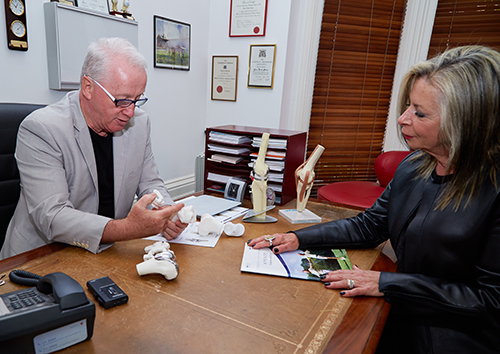 Patients with osteoarthritis that is limited to just one part of the knee may be candidates for a “partial” knee replacement (also called uni-compartmental knee replacement).
Patients with osteoarthritis that is limited to just one part of the knee may be candidates for a “partial” knee replacement (also called uni-compartmental knee replacement).
Your knee is divided into three major compartments: the medial compartment (ie. the inside part of the knee), the lateral compartment (ie. the outside part), and the patellofemoral compartment (ie. the front of the knee between the kneecap and thighbone). In a partial knee replacement, only the damaged compartment is replaced with metal and plastic. The healthy cartilage and bone in the remainder of the knee is left alone.
The knee joint becomes worn-out most commonly as a result of osteoarthritis but may also result from other causes such as trauma or injuries, meniscal tears and overuse. The aim of a partial knee replacement surgeryis to relieve pain, restore function and movement, and improve quality of life. The potential benefits of partial over a total knee replacement are: the smaller incision, less bone removal, less blood loss, faster recovery, better range of movement and a more “natural” feeling knee. The disadvantages of a partial compared with a Total knee replacememnt include slightly less predictable pain relief, and the potential need for more surgery. For example, a total knee replacement may be necessary in the future if arthritis develops in the parts of the knee that have not been replaced.
Not all patients are suitable candidates for partial knee replacement surgery. This will be discussed with Mr Moran at your consultation.
